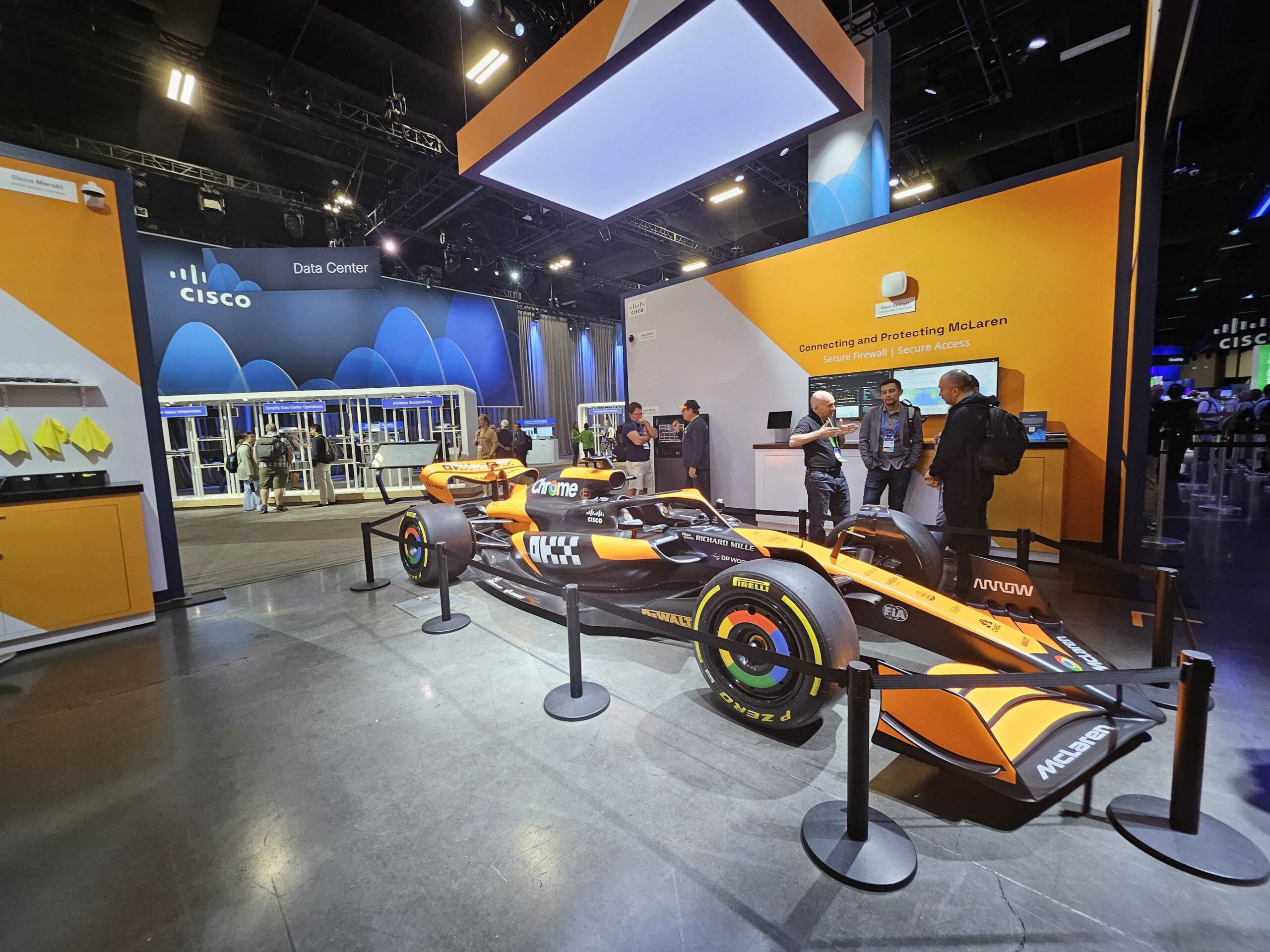GadgetWheels
How data drives F1’s
new star
McLaren racing sensation Oscar Piastri was at Cisco Live last week to shed light on his racing skills, writes ARTHUR GOLDSTUCK.
On the show floor of the Cisco Live 2024 expo in Las Vegas last week, the most popular attraction was not a computer or a robot, but a car.
To be more specific, it was a combination of cars, all carrying the brand of McLaren, one of the pacesetters in this year’s Formula 1 motor racing championship.
An authentic McLaren F1 car graced the Cisco Showcase pavilion. Emblazoned with the logos of half-a-dozen technology brands that work with the F1 team, from Dell and Google to VMware and Cisco itself, the car was in effect an ambassador for the power of data in motor racing.
The message was reinforced by the sight of lines of delegates to Cisco Live waiting for their turn at four racing simulators, bearing the logos of McLaren and Splunk, the cybersecurity and analytics software company recently bought by Cisco for $28-billion.
The real piece de resistance, however, was the presence of young McLaren racing sensation Oscar Piastri, currently lying 6th in the world standings. He and McLaren F1 Team CEO Zak Brown took to the keynote stage, where he told Cisco SVP and chief marketing officer Carrie Palin that at the speed racers drive, “it really comes down to instinct”.
“There’s a lot going on, you always try to do the best you can. And if you’re going to choose between trying to manoeuvre the car or listen to your engineer, at that kind of speed, you’re probably going to trust your instincts and do whatever you need to do.”
Brown agreed: “We’re making split second decisions. There’s so much data from a Formula One team. We’re about 1200 People, with 150 People on the track and 60 people back at mission control, at 24 races around the world. So you can imagine the intensity of our connectivity and security, analysing data, and you need to make split second decisions.
“As an example, it’s 20 seconds at a certain track to get our tyres prepared, whether we want to be on soft tyres or hard tires or medium tyres. We also know that the entrance to a certain track is 21 seconds, and if the safety car comes out after 23 seconds, we literally have two seconds to make a decision on what tyre to use.
“As you can imagine, in that two, three second window, you don’t have a lot of time to have a conversation. So you need to know, from a communication standpoint, exactly who to go to. And that decision is made and you’re stuck with that decision.”
Piastri’s ability to tune into that rapid flow of data and decision-making has been a key to his success.
He told Palin: “I think for the whole team, no less myself and Lando (Norris, his (McLaren team-mate), as the drivers we rely on technology and data massively. Gone are the days of purely driving on instinct. It’s now about trying to learn as quickly as you can and using the tools that you’ve got.
“We have real time data that engineers look at and give us real time feedback. But then communicating that to us, you need to have that in the right format and at the right time. And using that to accelerate learning. That’s what I was trying to do. Most of last year was about learning as quickly as I could.
“In between qualifying sessions they would have big screens on top of their car. In my case, I’ll be looking at Lando’s time compared to mine and seeing who’s quicker in which corners and how they did it. In the past, you didn’t even have access to that. Now it’s a really good way of accelerating both drivers.”
• Arthur Goldstuck is CEO of World Wide Worx and editor-in-chief of Gadget.co.za. Follow him on social media on @art2gee.


















